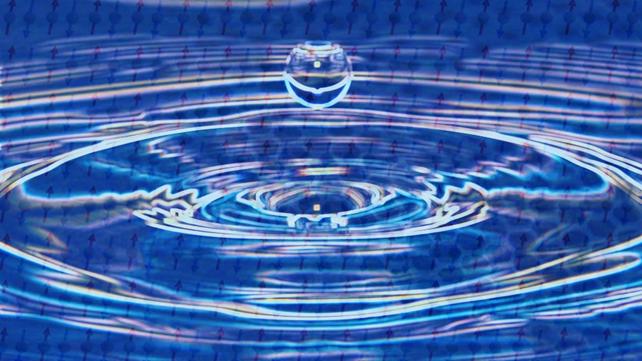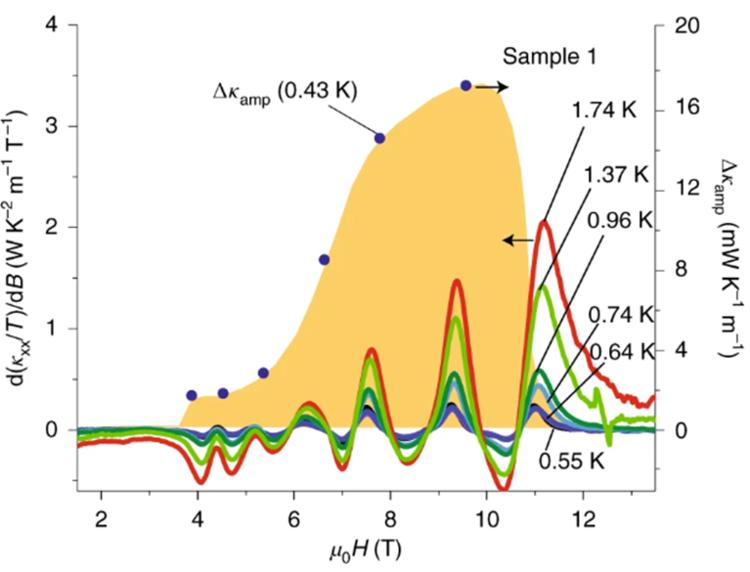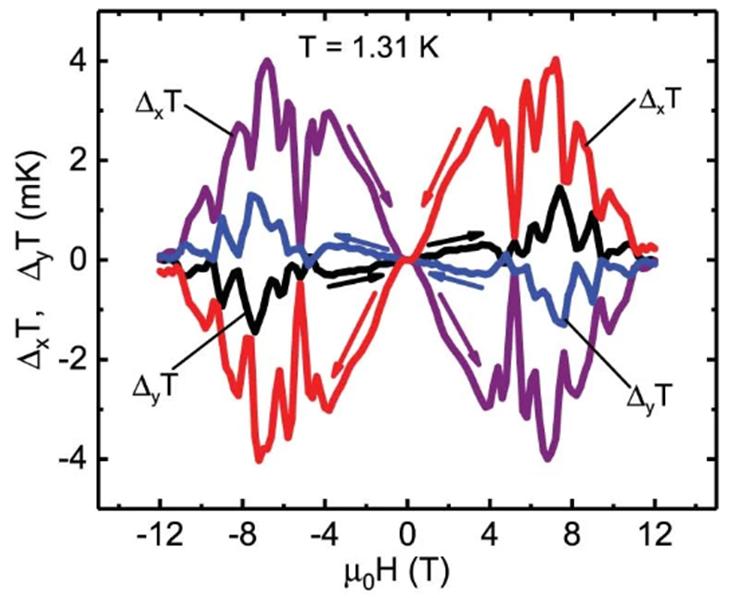
Many of the excitations of interest in exotic systems, such as quantum spin liquids and topological superconductors, do not carry electric charge. As a result, electrical transport measurements cannot detect them. However, these excitations do carry energy, which enables them to be studied via heat transport. Such heat measurement techniques require extreme sensitivity, where relevant temperature gradients are often in the order of microKelvin. Our group has conducted leading work in various heat measurements to study charge-neutral excitations, such as thermal Hall effect.
Our recent work has focused on Kitaev magnets, such as RuCl3 and BaCo2(AsO4)2. In RuCl3, we discovered oscillations in the longitudinal thermal conductivity of the system [1] as well as a thermal Hall effect that reveals topological bosonic edge modes. [2] We are currently investigating BCAO, and we have uncovered a rich phase diagram through thermal measurements.

The derivative curves d(κxx/T)/dB for a range of T (coloured curves) show that the oscillations onset abruptly at 4 T. Arrows indicate the relevant axes for the quantity plotted. The amplitude Δκamp (solid circles) is strikingly prominent in the QSL state. Its profile (shaded orange) distinguishes the QSL from adjacent phases.

Contributions of hysteretic effects to the signal detected at the Hall contacts (ΔyT) and at the longitudinal contacts (ΔxT). Below 4 K, it is critically important to identify and separate these contributions from the intrinsic planar thermal hall effect signal δy using careful analysis.
